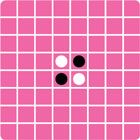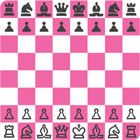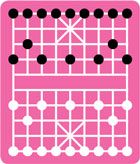博文
计算机玩各种棋达到了什么水平?
||
IEEE Spectrum杂志2014年7月号发表题为“AIs Have Mastered Chess. Will Go Be Next?”(人工智能掌握了国际象棋。围棋会是下一个目标吗?)的文章(http://spectrum.ieee.org/robotics/artificial-intelligence/ais-have-mastered-chess-will-go-be-next)。文中附有计算机玩9种棋类游戏已经达到的“段位”。一种棋戏所可能含有的走法(状态)越多,计算机掌握它就越难。围棋的可能状态数达到10的172次方量级,故目前的围棋弈棋程序只达到了业余高手的水平。对此文感兴趣的还可参阅该杂志的中文版《科技纵横》(本所主办)7月号。

Tic-TAC-TOE
Game positions: 104
Computer strength: PERFECT
 OWARE
OWARE
Game positions: 1011
Computer strength: PERFECT
 CHECKERS(跳棋)
CHECKERS(跳棋)
Game positions: 1020
Computer strength: PERFECT
 OTHELLO
OTHELLO
Game positions: 1028
Computer strength: SUPERHUMAN
 9-BY-9 GO
9-BY-9 GO
Game positions: 1038
Computer strength: BEST PROFESSIONAL
 CHESS(国际象棋)
CHESS(国际象棋)
Game positions: 1045
Computer strength: SUPERHUMAN
 XIANGQI (CHINESE CHESS,中国象棋)
XIANGQI (CHINESE CHESS,中国象棋)
Game positions: 1048
Computer strength: BEST PROFESSIONAL
 SHOGI (JAPANESE CHESS)
SHOGI (JAPANESE CHESS)
Game positions: 1070
Computer strength: STRONG PROFESSIONAL
 19-BY-19 GO(围棋)
19-BY-19 GO(围棋)
Game positions: 10172
Computer strength: STRONG AMATEUR
A Go-Playing AI can repeatedly apply its MCTS algorithm until resources—time or memory—run out. Like many other search methods, MCTS constructs a game tree, in which each possible move creates branches of new possible moves, which are conventionally drawn pointing downward. For a basic example of this algorithm, imagine that a Go program is trying to decide on its next move. It would therefore repeat these four steps:
Tree descent: From the existing board position (the root node of the search tree), select a candidate move (a leaf node) for evaluation. At the very beginning of the search, the leaf node is directly connected to the root. Later on, as the search deepens, the program follows a long path of branches to reach the leaf node to be evaluated.
Simulation: From the selected leaf node, choose a random sequence of alternating moves until the end of the game is reached.
Evaluation and back propagation: Determine whether the simulation ends in a win or loss. Use that result to update the statistics for each node on the path from the leaf back to the root. Discard the simulation sequence from memory—only the result matters.
Tree expansion: Grow the game tree by adding an extra leaf node to it.
https://blog.sciencenet.cn/blog-1557-820376.html
上一篇:Use the Right Word摘抄系列(40)--“善”之表达
下一篇:从轻便拖把的诞生看创新链
全部作者的精选博文
- • 没有分类,就无法认识世界
- • 不管怎么说,要爱
- • 科研资助新方式的实验进路
- • 当科学遇见权力
- • 在最沮丧的日子里观鸟治愈了她
- • 水果疗法真能让人完全健康?